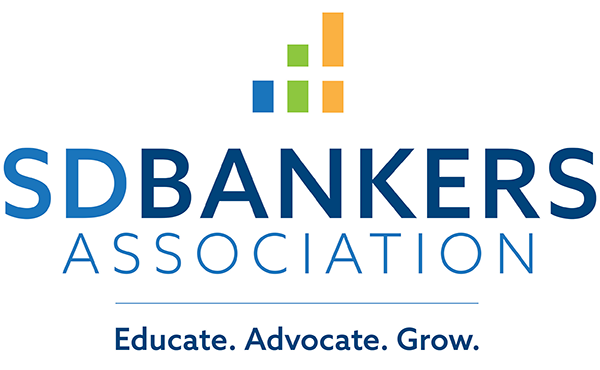As banks look to earn the business, trust and loyalty of more people, bank executives should consider ways to differentiate from the increasingly crowded market of banks, financial institutions and fintech providers. Enhancing customer service options are important ways to stand out from competitors while truly serving clients.
According to a previous Microsoft State of Global Customer Service Report, nearly 70 percent of respondents favorably view brands that engage in proactive customer service. Customer service, which can be hard to come by for other financial entities, can be a cornerstone of bankers’ sales and marketing plans.
SMS texting has gained steam among banks in recent years for good reason. According to survey results from Review.org, Americans check their phones 344 times per day. Banks can take advantage of this by utilizing text messages in a new way that meets people where they already are—on their phones). Rather simply talking to your customers with one-way SMS, open up the conversation to talk with your customers by utilizing two-way texting.
Running a successful two-way texting initiative takes a bit more consideration than scheduling and sending one-way communication. Here are six best practices to keep in mind to ensure two-way texting works to benefit both your bank and its customers.
1. Assign a local texting number to each branch or market. When it comes to choosing a financial institution, bank branches have a major advantage: They are local. Customers will want to text with someone who is local, too. When using a business SMS service, you can typically request a dedicated number in your local area code. If you have branches in multiple cities, get dedicated numbers for each of their respective area codes. This is the best way to promote that local presence without leaning on employees’ personal phone numbers for texting (which should be avoided at all costs).
2. Keep the phone number consistent across communications. Ensure the texting software you select enables something called a common inbox so your staff can login and respond to customers from the same number to avoid customer confusion. This dedicated number will also give customers the opportunity to store the number in their phone so they can text it again in the future. You can safely publish that number on places such as your website and Google business listing without fear of it becoming outdated. Some providers change the phone number for clients every month or so, which needs to be avoided for consistency’s sake.
3. Assign trained staff to manage conversations. Banks will want to assign at least a few people to manage the two-way texting initiative and adjust as needed based on how often it is utilized by customers. Some software will allow administrators to set up two-way texting either from a mobile device or computer, adding even more convenience and ability to respond to customers.
4. Respond in a timely manner. Speed matters in texting. It is, in fact, one of its major benefits. According to research from OpenMarket, 83 percent of millennials open SMS messages within 90 seconds of receiving them. It is safe to assume they expect the same kind of promptness from business texting. As such, bank leaders will want to ensure texts received from customers or prospects are responded to quickly. Ideally, this means messages are responded to within minutes, and up to an hour after text receipt should be the absolute longest accepted. If there are times when staff cannot respond (likely when the branch is closed), set up an automated message that informs people when they can expect a response.
5. Keep private information away from text. As with one-way texting, avoid sharing private information. Banks can use texts to inform someone of something related to an account, but they should not share account details, such as balances and personal identifying information.
6. Make opt-in and opt-out easy. Give customers the opportunity to sign up for texting when they start a new account. For existing customers, prompt them when they log into their accounts. Equally as important as opt-in is opt-out. On all initial outgoing messages, include a phrase such as: “Text STOP to opt out.” If a customer initiates the text or the bank is responding in a chain of messages to the same customer, the messages don’t need to include the opt-out language every time, though the bank should still allow the recipient to utilize the opt-out keyword (STOP) to block the number or be unsubscribed from the SMS list at any time.
Think of two-way texting as an alternative to email, chat boxes and phone calls. As more people lean toward texting as their preferred form of communication, business-to-consumer texting is increasing at a faster rate than email and phone calls. According to Juniper Research, businesses sent a total of 2.7 trillion texts in 2020, up 10 percent over the previous year. Offered two-way texting, customers get to choose how they prefer to communicate, giving them the individual attention they expect from their banks.
Now that some best practices have been defined, let’s explore how two-way texting can be utilized within banks.
Consider two-way texting for:
- Scheduling and confirming appointments with loan officers and other bank professionals.
- Letting people know about account overdrafts. (But prompt people to sign in securely into their account for more details—do not share details of transactions via text.)
- General questions from the public. With two-way texting, people can text the set number to ask questions about holiday hours, bank services and more even if the bank didn’t first text them.
There are many reasons to utilize two-way texting, and it’s important to note that it’s the customers who will determine exactly how the service is utilized within any particular bank. Once two-way texting capabilities are secured, let customers know about this new customer service feature that allows them faster, more convenient access to local bank workers who are ready and happy to serve them.
